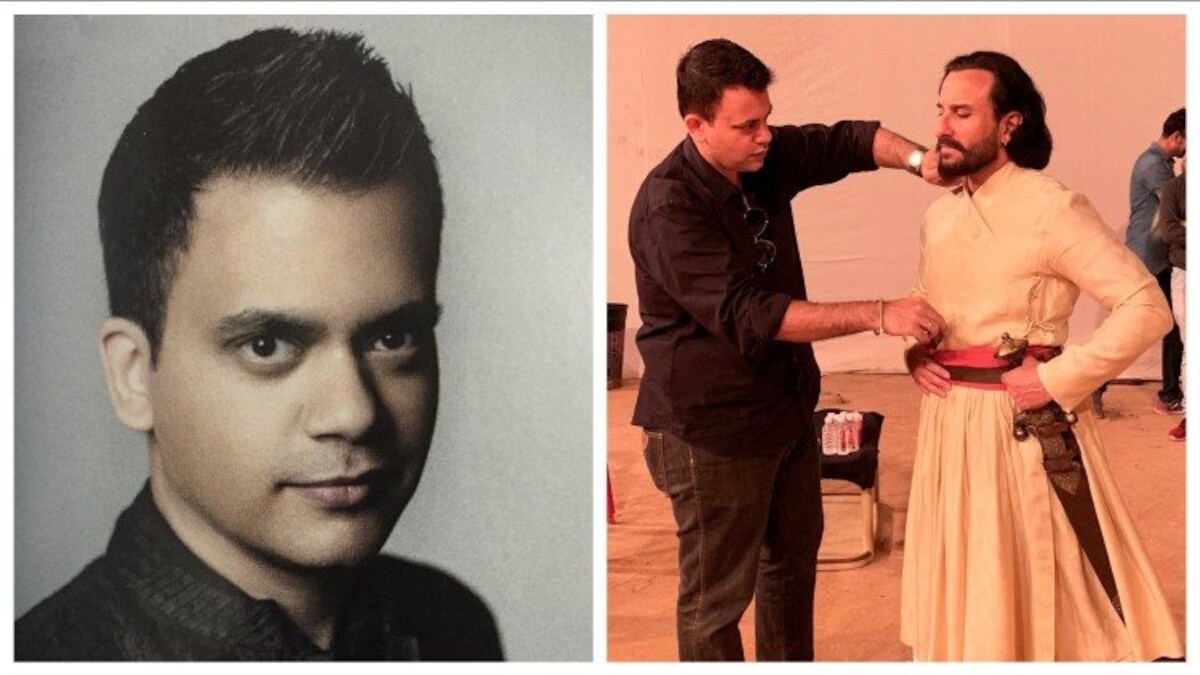When
Nachiket Barve
’s name was announced as the winner for the National Award for Best Costume for ‘
Tanhaji
’ a few months ago, I have to say I was completely nonchalant about it. It was the most obvious choice, not only was the Ajay-Devgn and Saif Ali Khan starrer the biggest film of 2020 (and there haven’t been any major films since), Barve’s costumes were just exemplary, they should be a part of history books too.
Last weekend, Barve went over to New Delhi to receive his award from the new president of India Droupadi Murmu, our first premier from a tribal community. The awards may have been seeped in protocol, but for 41-year-old Barve, a designer so close to his roots in craft, it was momentous. “The ceremony was so beautifully orchestrated to the finest detail. She was to remain present from 5pm to 6.47pm, and that’s exactly how long the ceremony lasted. Right from best actor winners Ajay Devgn and Surya to the smallest technician in the smallest film, everyone shared the same platform and equal space on stage. It really brought to the front our otherwise unsung heroes,” he says.
‘Tanhaji’ is a remarkable oeuvre, a period film with stellar CGI that chronicles Maratha warrior Tanaji Malusare’s attempts in recapturing the Kondhana fort from Aurangzeb and his trustee Udaybhan Rathore. “The film was a real labour of love, and a bold and risky decision for me. We’ve seen a lot of over-the-top period films, but I decided to pare it down, make it more authentic rather than hyper stylised. I wanted to bring my knowledge of craft and design in a better way, and turn actors into characters,” he smiles. Barve used khadi to createTanhaji’s son of the soil vibe, played by Devgn. His wife Savitri (Kajol) was a leader’s wife but not a royal, so there were saris from Ilkal, Hubli and Dharwa in Karnataka. He also created a Maharashtrian Shalu (a combination of a Benarasi and a Pathani), not seen in film before. And jewellery from a family whose ancestors worked in Shivaji’s court, and let him use their 400-year-old casts.
Shivaji, played by Sharad Kelkar, couldn’t wear any zardozi or Mughal-style royal clothes. So there were local textiles with shell and pearl necklaces. The Dhakai mulmuls, jamdanis and ikats belonged to Aurangzeb, played by Luke Kenny. “And Saif, who played Rathore from Rajasthan, carries everything with such aplomb,” Barve adds.
Barve’s seamless costumes have brought him the upcoming
Adipurush
, and Har Har Mahadev. They are also a great foil to his eponymous fashion label, that’s shows off the finest Indian embroideries there are to see. “Both costume and fashion are a foil to each other. Fashion is a lonely job but an open field. Costume designing is a team effort and a director’s vision,” he avers.
Barve’s inroads into costume came from his family friends, the Bachchan family. Jaya Bachchan once suggested he style Amitabh Bachchan for a jewellery advertisement. He did Tanishq and Kalyan jewellers with them. “Mrs Bachchan has such great taste, she is like an institution where there’s so much to learn from.” He also styled for ads with Anushka Sharma and Sonam Kapoor, and two acclaimed Marathi films ‘Katyar Kaljaat Ghusali’ and “Ani Dr Kashinath Ghanekar’.
And of course, the most eyeball-grabbing was his styling for Samantha Ruth Prabhu for the ‘Oo antava’ song. “She was like a preening peacock, in blue and green and mirror works,” he describes her itsy-bitsy lehenga choli in the sensational song. Barve’s roots are firmly entrenched in design, lessons he picked up from the legendary National Institute of Design, NID, in Ahmedabad.
“NID was life-altering for me. I come from a family of doctors but they grew up in a lower middle-class family. My mother’s parents couldn’t afford to educate her beyond the 12th standard, and she had to find scholarships to fund her way through medical school. She had two blouses, one white and one black, and would buy saris from Dadar that were the end of the thaan and cost Rs 6,” Barve says. “A nurse must’ve dropped me on my head, because despite not growing up around French chiffons, I only dreamed of fashion. NID spoke my language, it was on my wavelength. I felt I had found my planet. It was science meets art meets thought meets system, and all about finding solutions through design.”
It also gave him a scholarship that sent him to Paris for a year to work with LVMH-owned Celine. And won him the International Woolmark as an Asia and Middle East finalist.
Nachiket Barve believes fashion must achieve three things: bring joy to the wearer, speak of the time it lives in as well as be timeless, and celebrate what human hands can do. Through his clothing line as well as his costumes for cinema, Barve is driving home this message.
Top Notch’ is a fortnightly column where journalist Namrata Zakaria introduces us to fashion’s elite and erudite club.
Namrata Zakaria is a seasoned writer and editor, and a chronicler of social and cultural trends. Her first book, on late fashion designer Wendell Rodricks’ Moda Goa museum, is due to be published shortly. Zakaria is especially known for her insider’s take on fashion, luxury and social entrepreneurship in India. Her writing is appreciated for shaping opinions, busting myths, making reputations and sometimes breaking the odd career. Zakaria is also involved in putting together philanthropic efforts in the field of economic and environmental sustainability.
Read all the
Latest News
,
Trending News
,
Cricket News
,
Bollywood News
,
India News
and
Entertainment News
here. Follow us on
Facebook
,
Twitter
and
Instagram

